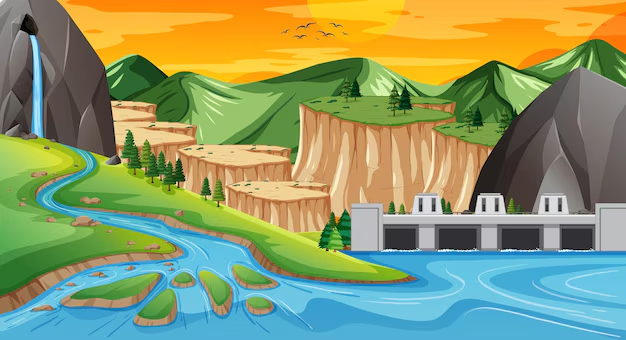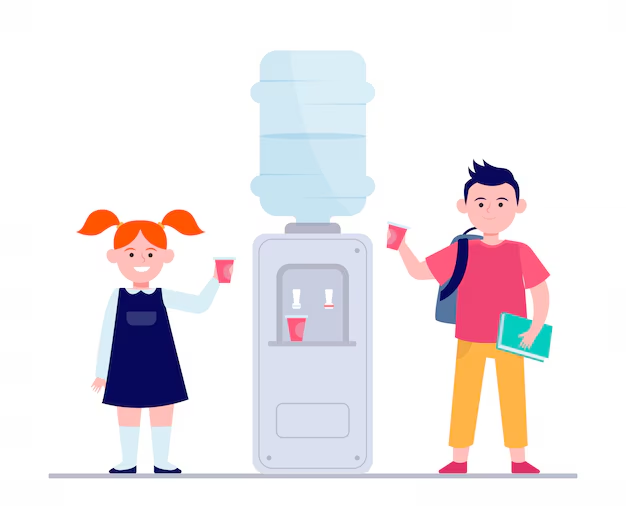Too Much Water, Too Little Water – Complete Guide For Class 4 EVS Chapter 18
Welcome to iPrep, your Learning Super App. Our learning resources for Chapter 18, “Too Much Water, Too Little Water,” in Class 4 EVS are meticulously designed to ensure students gain a comprehensive understanding of this essential topic. These resources include detailed notes, interactive exercises, and practical examples that cover the entire spectrum of key concepts. From fundamental principles of water conservation and distribution to the effects of excess or scarcity of water on daily life, every aspect is explored. Students will engage with real-life scenarios, helping them understand how water management impacts communities. Additionally, these resources aim to foster a sense of responsibility for sustainable water use.
The concept of “Too Much Water, Too Little Water” in Class 4 EVS delves into the foundational principles of life by exploring the essential characteristics that define the role of water in our environment. It examines the critical balance necessary for sustaining ecosystems, agriculture, and human health. Students will learn how both excessive rainfall and drought can drastically affect the landscape and livelihoods, highlighting the need for effective water management strategies. Through various activities and discussions, learners will understand the importance of conserving water and the impact of climate change on water availability. This comprehensive exploration equips students with the knowledge to appreciate water’s vital role in maintaining life on Earth.
Objectives of Learning the Chapter “Too Much Water, Too Little Water”
The chapter Too Much Water, Too Little Water in Class 4 EVS aims to:
- Understand Water Scarcity and Excess: Teach students about the impacts of droughts and floods on daily life, agriculture, and the environment.
- Promote Water Conservation: Highlight the importance of saving water and adopting sustainable usage practices.
- Awareness of Water Safety: Educate students about the consequences of drinking contaminated water and ways to ensure water safety.
- Encourage Real-Life Application: Enable learners to relate the concepts to their own experiences and surroundings, fostering critical thinking about water-related issues.
- Foster Community Responsibility: Inspire students to contribute to water conservation efforts in their homes and communities.
These objectives ensure that students gain both theoretical knowledge and practical insights into the significance of water in sustaining life and ecosystems.
What to Drink?
A Glimpse into Nallamada, Andhra Pradesh
The chapter “Too Much Water, Too Little Water” from class 4 EVS starts with the story of Nallamada. In the village of Nallamada, a guest arrives at Suguna’s home. While the guest is offered a cold drink, he opts for a simple glass of water. Suguna’s father, Appa, expresses concern about the water quality in their area, explaining that the water they have is unfit for drinking. This highlights a significant issue that many rural areas face: the availability of clean drinking water.

Discussion Points
- How Can Unclean Water Harm Our Bodies? Unclean water can lead to various health issues, including waterborne diseases such as diarrhea, cholera, and hepatitis. The presence of pollutants and pathogens in dirty water poses severe risks to our health.
- Experiences with Unclean Water Have you ever encountered unclean water in your area? Reflect on the reasons behind this occurrence and the impact it had on your community.
- Health Consequences of Unclean Water It is crucial to understand that unclean water can lead to serious health problems. Discuss if you know anyone who has fallen sick due to drinking contaminated water.
- Family’s Approach to Water Safety Suguna’s family must take precautions regarding their drinking water. They might be boiling the water or using filtration methods to ensure its safety.
- The Guest’s Preference The guest’s choice to avoid cold drinks may stem from health concerns regarding the water quality in the area. This highlights the importance of being cautious about our drinking water sources.
Water Games: An Excursion to Bazaar Gaon, Maharashtra
Let’s now go further in the chapter Too Much Water, Too Little Water and learn about water games in Bazar gaon. In the bustling water park near Bazaar Gaon, children Rohan and Reena enjoy splashing around. However, amidst the fun, they encounter a stark reality when a crowd gathers outside the park, struggling for water.

Reflection Questions
- Have you ever faced a water shortage at home? How did you cope with it?
- Water play is enjoyable, but are there instances when you are restricted from playing with water? Discuss the reasons behind these restrictions.
- Observing the disparity, the villagers lack even drinking water, while others indulge in water-based entertainment. It’s crucial to contemplate the ethical implications of water use in such scenarios.
Can We Drink This? A Lesson from Cuffe Parade, Mumbai
Let’s now go further in the chapter Too Much Water, Too Little Water, and understand the concept of drinking water. Deepak visits Raziya Madam’s house and learns about a concerning news report indicating that gutter water has contaminated the drinking supply in their area.

Important Discussion Points
There are various important discussion points in this section of class 4 EVS chapter 18 Too Much Water, Too Little Water. These include –
- Raziya’s Concern Raziya is worried because contaminated water can lead to severe illnesses like diarrhea and vomiting. This emphasizes the importance of being informed about our water sources.
- Water Safety Measures Raziya advises boiling water before consumption to eliminate potential pathogens. Discuss different methods to purify water, including boiling, filtering, and using chemical treatments.
- Consequences of Ignoring Water Safety If Raziya hadn’t read the news, many could have consumed contaminated water, leading to health crises in the community.
- Access to Water The difference in water access between Deepak’s and Raziya’s households highlights the inequalities in water distribution. Reflect on any news articles you’ve come across regarding water issues.
Making Oral Rehydration Solution (ORS)
When experiencing diarrhea or vomiting, it’s crucial to replenish lost fluids, as mentioned in the chapter Too Much Water, Too Little Water. Here’s a simple recipe for a homemade ORS:

Ingredients Quantity Boiled and cooled water 1 glass Sugar 1 teaspoon Salt A pinch
The water should taste similar to tears, ensuring a balanced electrolyte solution to aid recovery.
Water Survey in School: Assessing Water Facilities
To understand the drinking water situation in schools from the chapter Too Much Water, Too Little Water, students can be divided into groups to conduct a survey.
Group Assignments
Group 1: Drinking Water Arrangements

- Identify sources of drinking water in the school (tap, tank, hand pump).
- Observe the cleanliness and maintenance of water containers.
Group 2: Toilet Facilities
- Assess the availability of water in toilets.
- Determine if there are separate toilets for boys and girls.
Group 3: Health Issues
- Gather information about health issues affecting children in the class, focusing on symptoms like diarrhea and vomiting.
Data Collection Table
| S. No. | Diarrhea, Vomiting | Loose Motion | Yellow Urine, Stomach Ache |
| 1 | |||
| 2 | |||
| 3 | |||
| 4 | |||
| 5 |
Children Show the Way: A Case Study from Karnataka
The people of Holgundi in Karnataka faced severe water scarcity due to prolonged droughts. The village panchayat, including a group of children called Bhima Sangh, worked together to address this crisis.

The Restoration Efforts
- Identifying Historical Water Sources The children discovered that a once-thriving water tank had become filled with mud and debris. They recognized the need to clean and restore this vital water source.
- Collaborative Action The children took the initiative to clean the tank, repair cracks, and plant trees around it to promote water retention.
- Long-Term Sustainability Their efforts resulted in a restored tank that retained water even during dry spells, proving that collective action can lead to significant change.
Let’s Conclude
The chapter “Too Much Water, Too Little Water” in Class 4 EVS emphasizes the vital role of water in our lives and the need for sustainable management. Through engaging content, students explore the consequences of water scarcity and abundance, learn about real-life challenges faced by communities, and understand the importance of water conservation.
This guide for “Too Much Water, Too Little Water” in Class 4 EVS fosters critical thinking and encourages learners to reflect on their personal experiences with water. It highlights practical measures for ensuring clean and safe water, empowering students to contribute positively to water conservation efforts in their surroundings.
By exploring “Too Much Water, Too Little Water” in Class 4 EVS, students gain an appreciation of how water impacts daily life, ecosystems, and economies. This foundational knowledge equips them to become responsible citizens who value and advocate for sustainable water practices in the future.
Practice questions on Chapter 18 - Too Much Water, Too Little Water
Get your free Chapter 18 - Too Much Water, Too Little Water practice quiz of 20+ questions & detailed solutions
Practice Now








